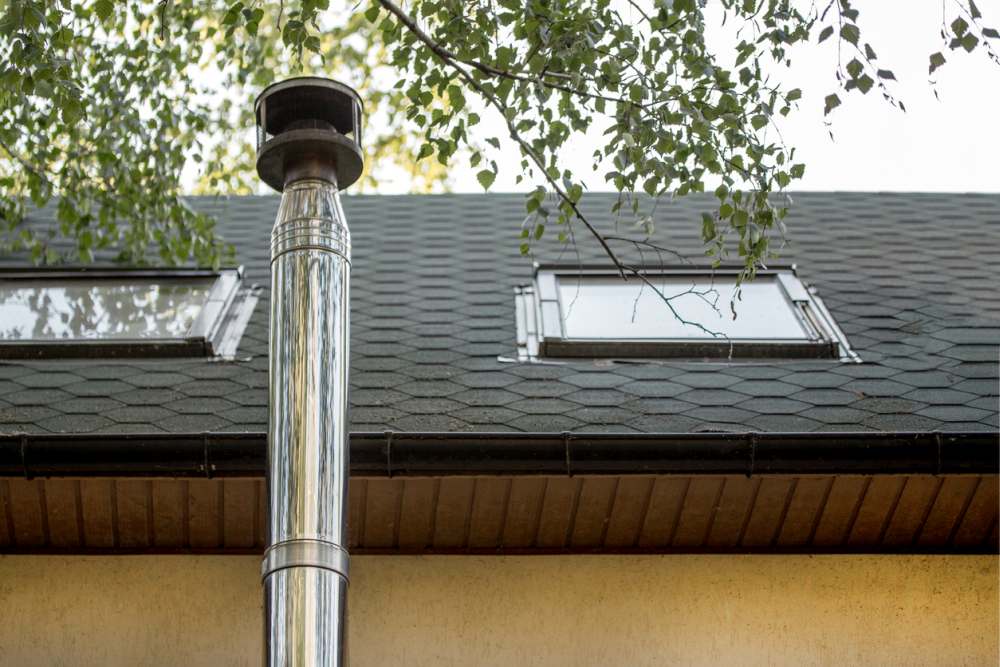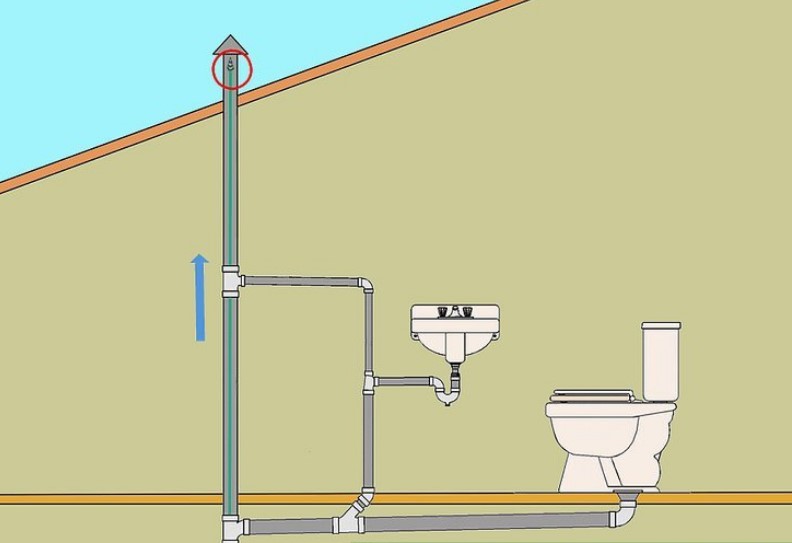Grasping The Value of Correct Ventilation in Plumbing Systems
Grasping The Value of Correct Ventilation in Plumbing Systems
Blog Article
We've noticed this post about What Is A Plumbing Vent & How Do They Work? directly below on the net and decided it made good sense to write about it with you on this site.

Correct ventilation in plumbing systems is commonly neglected, yet it is vital for keeping the capability and safety of your home's plumbing. Air flow assists manage air pressure, protect against the build-up of dangerous gases, and ensure the effective elimination of waste. In this overview, we will certainly check out the importance of appropriate plumbing ventilation, how it functions, and the advantages it offers your pipes system.
Understanding Air Flow in Pipes
Ventilation in pipes refers to the network of pipelines that allow air to flow through the drainage system. These vents serve multiple purposes, consisting of managing air pressure within the pipes, avoiding sewage system gases from going into the home, and assisting in the smooth circulation of wastewater.
Exactly How Air Flow Works in Plumbing Solutions
Atmospheric Pressure Regulation
Correct ventilation preserves balanced air pressure within the plumbing system. When water flows via pipelines, it displaces air. Without appropriate air flow, this variation can develop negative stress, leading to slow drains or siphoning of water from traps, which can trigger unpleasant smells to seep into the home.
Avoiding Drain Gas Accumulation
Among one of the most essential features of plumbing vents is to prevent sewage system gases, such as methane and hydrogen sulfide, from gathering within the home. These gases can posture significant health and wellness threats and are very flammable. Vent pipes enable these gases to run away safely outside.
Assisting in Waste Removal
Air flow aids in the effective elimination of wastewater by preventing airlocks in the drain system. When air can move easily through the vents, it enables water and waste to stream efficiently through the pipes, decreasing the threat of obstructions and backups.
Types of Pipes Vents
Main Heap Vent
The main stack vent, likewise called the vent pile, is the main vent in a plumbing system. It prolongs from the major drainpipe align through the roof covering, allowing gases to escape and fresh air to go into the system.
Branch Vent
Branch vents attach to the primary stack air vent and offer individual components, such as sinks, commodes, and showers. These vents make sure that each component has adequate air flow to operate effectively.
Air Admission Shutoff (AAV).
An Air Admission Valve (AAV) is a one-way valve that allows air to enter the plumbing system without the requirement for a standard vent pipe extending through the roof covering. AAVs are generally utilized in renovations or areas where installing a conventional vent is unwise.
Indicators of Poor Air Flow in Plumbing.
Slow Draining Fixtures.
If your sinks, bathtubs, or bathrooms are draining slowly, it could be a sign of poor ventilation. Poor air flow can produce a vacuum effect, making it challenging for water to drain appropriately.
Gurgling Appears.
Gurgling audios coming from drains pipes are typically an outcome of air being sucked via water catches as a result of unfavorable pressure in the pipes. This is a clear indicator of inadequate ventilation.
Undesirable Odors.
Sewer odors inside your home are a red flag that your pipes system is not appropriately aerated. This could indicate that drain gases are not being properly aired vent outside, resulting in possibly hazardous conditions.
Common Air Flow Blunders.
Poor Vent Sizing.
Making use of small air vent pipes can result in inadequate air flow and stress discrepancies in the system. It's essential to utilize vents that fulfill the certain requirements of your plumbing system.
Improper Vent Positioning.
Positioning vents also far from the fixtures they serve can lower their effectiveness. Appropriate positioning makes sure that air can stream easily and efficiently via the system.
Disregarding Code Requirements.
Building ordinance offer specific standards for pipes air flow. Overlooking these codes can lead to a system that falls short to function correctly and might result in pricey fixings or health hazards.
Advantages of Correct Ventilation.
Enhanced System Efficiency.
Correctly ventilated pipes systems operate a lot more efficiently, with less obstructions, faster draining, and less strain on the pipelines. This efficiency expands the life expectancy of the plumbing system.
Improved Air High Quality.
By avoiding sewer gases from entering your home, proper ventilation contributes to better indoor air quality, making your living environment healthier and a lot more comfortable.
Stopping Water Damage.
Ample air flow aids stop water from being siphoned out of traps, which can lead to sewage system gases entering the home and triggering water damages with time.
Steps to Make Certain Proper Air Flow.
Consulting Plumbing Codes.
Constantly get in touch with local plumbing codes when developing or customizing your pipes system. These codes supply the required guidelines for correct airing vent and guarantee your system fulfills safety and security criteria.
Normal Assessment and Upkeep.
Routine inspections can assist recognize prospective ventilation issues prior to they come to be major troubles. Maintenance tasks, such as cleansing vent pipes and checking for clogs, are essential for maintaining the system in good working order.
Specialist Installment.
For brand-new installations or significant adjustments, it's a good idea to work with an expert plumbing technician. They have the competence to make sure the ventilation system is properly designed and installed according to code.
Final thought.
Proper air flow is an essential element of any kind of pipes system, guaranteeing that it operates successfully and safely. By recognizing the significance of air flow, recognizing the indicators of bad ventilation, and taking steps to keep your system, you can avoid expensive problems and shield your home's air quality.
4 Things You Should Know About Your Plumbing Vents
What Plumbing Vents Are
Also called a vent stack, a plumbing vent is a vertical pipe attached to your drain line that runs through your roof. The plumbing vent pipe, or plumbing air vent, removes gas and odors from your plumbing system and allows fresh air to enter the pipes, helping the water to flow out of the drain pipes.
What Plumbing Vents Do
Plumbing vents have two basic functions. One of which is to allow unpleasant smelling wastewater and sewer gasses to escape your plumbing system instead of entering your home. Plumbing vent pipes are typically located on roofs, away from windows, to ensure the fumes exit the home completely.
The other function of the plumbing vent is to move fresh air into your plumbing system. This helps move water through every plumbing fixture in your house, like toilets and sink drains. Think of the way in which you need to let a little air into the bottle as you pour soda in order to make the drink flow smoothly.
Different Types of Plumbing Vents
True vent: This is the most common vent option. In simplest terms, a true vent is a vertical pipe attached to your drain line that exits through the roof. They often function as the main vent that other fixtures can connect to. Re-vent pipe or auxiliary vent: Attached to the drain line near specific plumbing fixtures, re-vent pipes run up and over to connect to the main vent. Common vent: Two plumbing fixtures installed on opposite sides of a wall are typically tied into the vent stack using something known as a sanitary cross. Wet vent: This venting option operates as a drain pipe and a vent at the same time. Wet vent drainage systems drain water from one fixture while venting the air from another. Although they’ve been used for over 100 years, wet vent systems have only recently been added to the plumbing code in many areas. If you’re planning on installing one in a bathroom remodel, make sure you check your local code prior to construction. Loop vent: For free-standing fixtures like kitchen island sinks, loop vents are ideal. These vent pipes run under the floor, rise from the P-trap, and create a loop inside the cabinet sink. Air admittance valve: An AAV is a one-way mechanical valve typically installed at the site of the plumbing fixture. AAVs allow venting to occur without having to tie into a larger venting system. They’re ideal for venting fixtures where you aren’t able to easily connect to an existing vent system. Common Plumbing Vent Issues
Although vent pipes typically don’t have water flowing through them, they’re still subject to many typical plumbing issues. For example, clogs are one of the most common problems associated with sewer vent pipes. If your vent pipe gets clogged, all of your plumbing fixtures tied into the vent stack will be affected.
A sink with a slow drain that bubbles and gurgles or a strong sewage smell around your toilet are both indicators that your toilet vent pipe is clogged. Because most vent pipes exit through the roof, old leaves, twigs or even a bird’s nest could be clogging the pipe.
Clogs in your vent pipe system cause a buildup of negative pressure, meaning that water won’t be able to flow out of your home very well. It’s similar to putting your finger over the opening of a straw to trap water inside. When you remove your finger, the water is able to flow out of the straw.
If you suspect you have any blockage in your vent, make sure you have a professional come examine the situation. Left unchecked, a blocked air vent can lead to other costly repairs, like leaks and sediment buildup.
Under Pressure
Pipe vents are essential aspects of a home’s plumbing system. Owning a home means learning about all sorts of things you never put much thought into before. But by understanding as much as you can about the important systems of your home, you can keep those budgets intact and those anxiety levels low.
https://www.homeserve.com/en-us/blog/home-improvement/plumbing-vents/

I found that review on What Is a Plumbing Vent and Why Is It Important when looking around the web. Don't hesitate to take a moment to distribute this blog post if you enjoyed reading it. I praise you for your time. Revisit us soon.
Course Detail Report this page